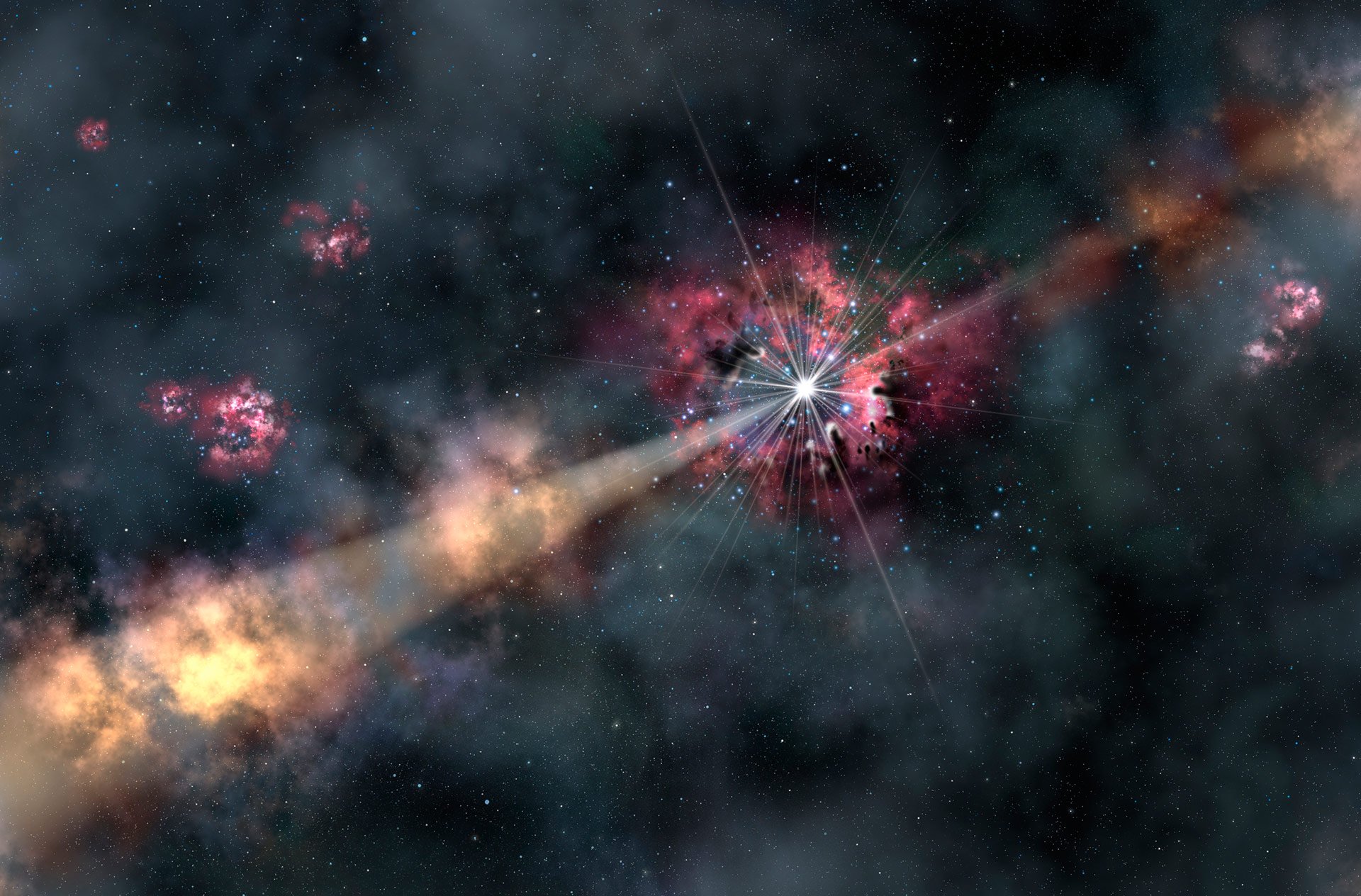

Keck Observatory's 10-meter Keck-II telescope at Mauna Kea, Hawaii, to obtain a spectrum of the burst afterglow.Ī distance to the burst was determined from its spectrum, and the burst was found to be about 9 billion light-years from Earth. Tsvi Piran (now at Columbia University), and it provides an important input for theories of gamma-ray bursts.Īt the prompting of the Caltech team, a group of astronomers led by Professor Garth Illingworth of the University of California at Santa Cruz, used the W. Re'em Sari, a theorist at Caltech, and Dr. Meanwhile, a new radio source, coincident with the visible-light afterglow discovered at Palomar, was found at the National Radio Astronomy Observatory's Very Large Array radio telescope, near Socorro, New Mexico, by Dale Frail and Kulkarni. This was the first time that such rapid measurement of a burst afterglow was made, and its extreme brightness was unexpected. Bloom.įollowing the Caltech team's announcement, several hours later a team of astronomers known as the ROTSE collaboration, led by Professor Carl Akerloff of the University of Michigan, reported that the visible light counterpart of the burst was also seen in the images taken with a small, robotic telescope operated by their team, starting only 22 seconds after the burst. The image on the bottom is the discovery image obtained by S. The image on the top is from the Palomar Observatory's digital sky survey (DPOSS). We got to watch a remarkable fireworks show!"Ī comparison of images obtained at Palomar Observatory. with a wake-up call from our Italian friends alerting us about their burst detection," said Bloom, "But it was certainly worth it. Within three hours of the burst, members of the Caltech team, including senior postdoctoral scholar in astronomy Stephen Odewahn and graduate students Joshua Bloom and Roy Gal, used Palomar Observatory's 60-inch telescope to discover a rapidly fading visible-light afterglow associated with the burst. It was the brightest burst seen so far by this satellite, and one of the brightest ever seen by NASA's Compton Gamma-Ray Observatory. This burst, called GRB 990123, was discovered by the BeppoSAX satellite on January 23. The bursts may last only a few seconds in gamma rays, but leave more long-lived but rapidly fading afterglows in X-rays, visible light, and radio waves, which can be studied further. Since then, about a dozen bursts have been studied in detail by astronomers using ground-based telescopes. A team of Caltech astronomers was then able to establish that the bursts originate in the very distant universe. The chief difficulty in studying these puzzling flashes is in locating them precisely enough and quickly enough to follow up with ground-based telescopes.Ī breakthrough in this field was made in early 1997 by the Italian/Dutch satellite BeppoSAX, which can locate the bursts with a sufficient accuracy. NASA's Compton Gamma-Ray Observatory satellite has detected several thousand bursts so far. Some theorists believe that the bursts originate during the formation of black holes. Since then, over a hundred theories of their origins have been proposed, but the causes of gamma-ray bursts remain unknown. Gamma-ray bursts are mysterious flashes of high-energy radiation that appear from random directions in space and typically last a few seconds. "Yet the burst lasted only a few tens of seconds." George Djorgovski, another of the principal investigators on the team. "If the gamma rays were emitted equally in all directions, their energy would correspond to ten thousand times the energy emitted by our sun over its entire lifetime so far, which is about 5 billion years," said Caltech professor of astronomy S. Credit: The Caltech GRB Team/Space Telecsope Science Institute Stephen Odewahn, a member of the Caltech team. The images were processed at Caltech by Dr.
:max_bytes(150000):strip_icc()/GRB080319B_illustration_NASA-58b848293df78c060e686c4d.jpg)
A section of the Hubble Space Telescope image of the field of GRB 990123, showing the afterglow and its host galaxy, taken about 16 days after the burst.


 0 kommentar(er)
0 kommentar(er)
